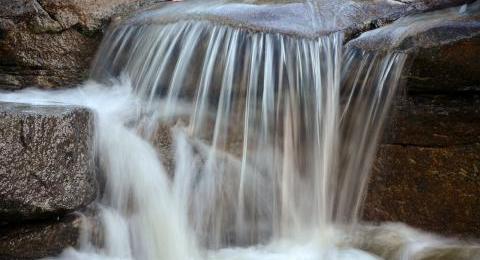
Climate change poses a number of threats to New Hampshire's water bodies, from rising temperatures and increase risk of drought to greater stormwater runoff due to more extreme precipitation. Protecting water quality and quantity will be increasingly important in the face of a changing climate, not just for the wildlife that live in and depend on water resources, but also for NH communities.
Protecting our current and future drinking water sources in the face of increasing drought risk is one obvious action. In addition, protecting floodplains and wetlands can help maintain the natural areas that act as 'sponges' in absorbing flood waters.
Communities can protect these important resources through permanent land protection as well as through regulatory measures, such as vegetated buffer requirements and floodplain zoning districts. Conservation commissions and land conservation organizations can ensure water resources are identified and prioritized for protection. Educational efforts can help build awareness about these resources, too. For example, many communities encourage water conservation strategies during drought periods, and communities can provide information about landscaping best practices near water resources, stormwater management options, and the benefits of vegetated buffers.
More Information
- Buffer Options for the Bay project website
- New Hampshire's Changing Climate, Land Cover, and Ecosystems - Fact Sheet 5: Aquatic Ecosystems - Fish Habitat
- New Hampshire's Changing Climate, Land Cover, and Ecosystems - Fact Sheet 6: Surface Water Runoff
- Nashua Region Water Resiliency Action Plan (2016)
- Sea-level Rise Impacts on Drinking Water: A Groundwater Modeling Study in Newmarket, NH

